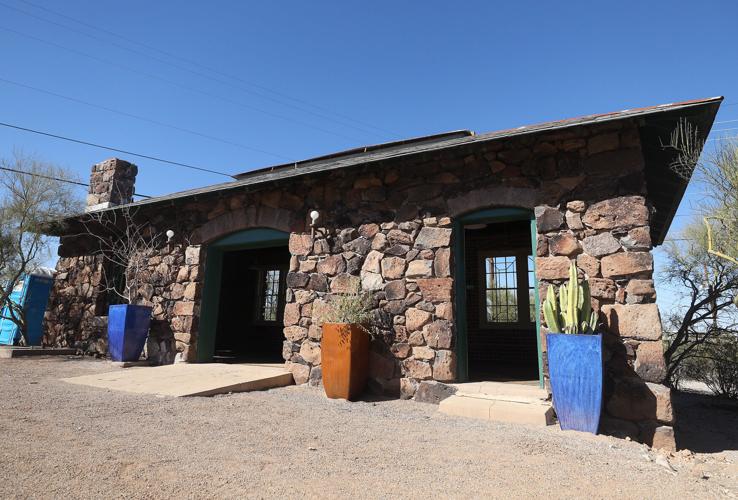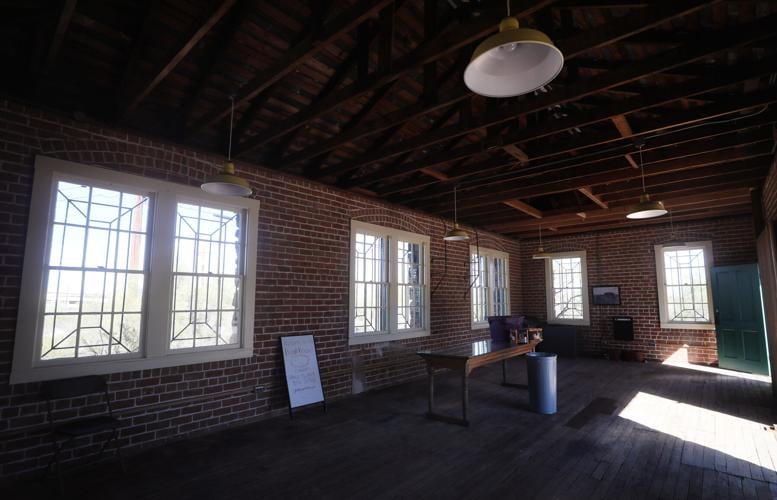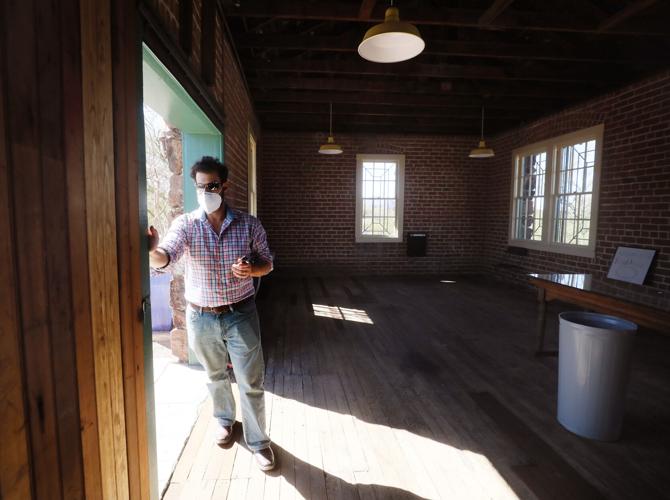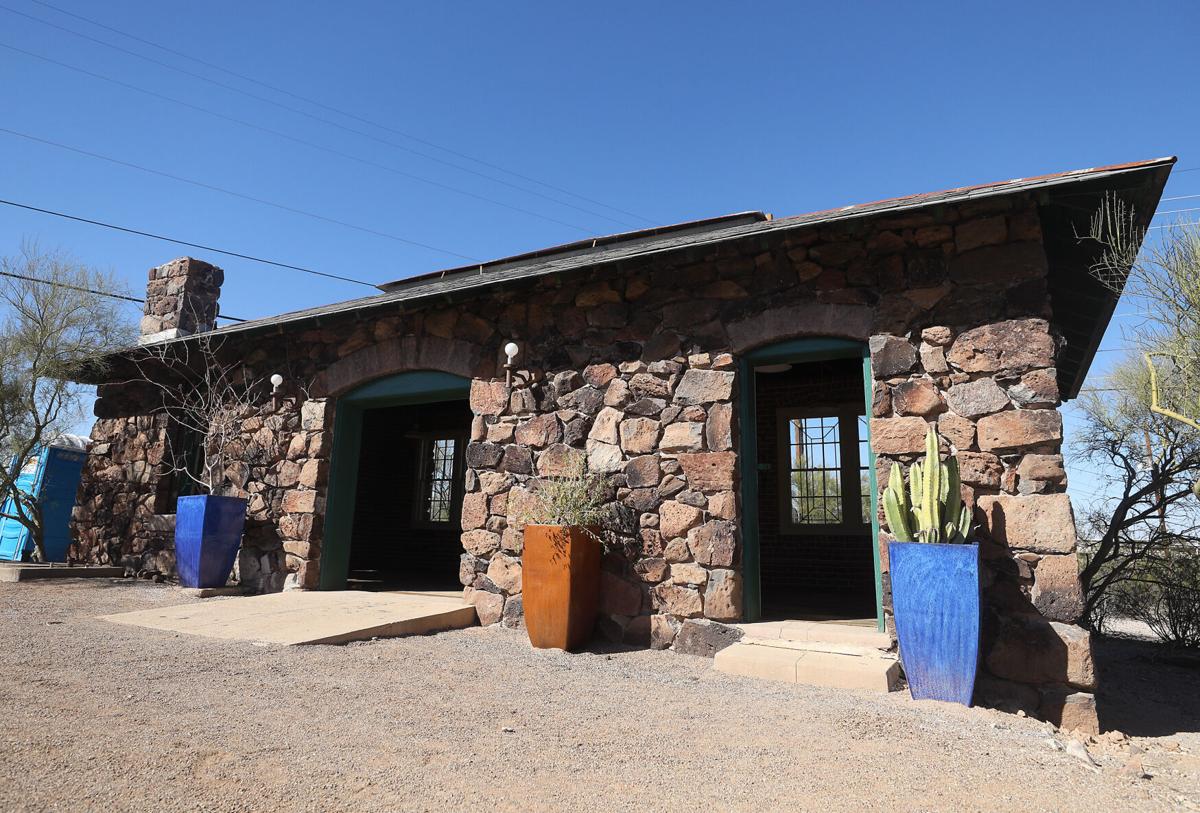Tumamoc Hill looks out over a sprawling city ringed by desert and mountains, without a single, substantial body of water in sight.
So why does the hill have its own boathouse?
The answer goes back more than a century to a massive, human-caused flood event along the Colorado River that altered the geography of California and drew the interest of a new research institute that had just started up in Tucson.
In 1905, heavy spring runoff on the Colorado broke through the headgates of a newly constructed irrigation canal, sending the bulk of the river’s flow west into the Salton Sink, a once-dry lakebed perched atop the San Andreas Fault in one of the lowest spots in North America.
It took two years to repair the breach and return the Colorado to its normal course. By then, the river had created a 500-square-mile terminal lake known as the Salton Sea in the California desert.
Among the first to study the inland sea and map its 150-mile coastline by boat were researchers Daniel T. MacDougal and Godfrey Sykes from the Carnegie Institution’s Desert Laboratory, which opened on Tumamoc Hill in 1903.
Explore the history of the boathouse found at the base of Tucson's Tumamoc Hill with narrator David Yetman. Video courtesy of University of Arizona's Desert Laboratory on Tumamoc Hill.
By then, the British-born Godfrey had already explored the Colorado River Delta and helped build the telescope domes at Lowell Observatory in Flagstaff, where he lived for decades.
“He was a renaissance man and jack of all trades — a builder and also an explorer,” said Ben Wilder, director of the University of Arizona’s Desert Laboratory on Tumamoc Hill.
Wilder said Sykes used to build his boats right on the bank of whatever river he wanted to explore, then abandon the vessels at the end of the journey. The workshop at Carnegie’s Desert Laboratory gave Sykes the luxury of being able to store, maintain and reuse his boats, Wilder said.
The UA’s 2008 management plan for Tumamoc Hill describes the history of the building.

Last year, the boathouse was fixed up enough to welcome visitors, but the roof is still so porous that it’s not safe to leave artwork or anything else inside that might be damaged by the elements.
The 20-by-40-foot boathouse was designed by Sykes and built at the foot of the hill in 1908 by Tucson construction contractor F.M. Welsh. It is made from two layers of red brick covered with volcanic stone collected from the area, with a slate roof, wood floors and a fireplace like other Carnegie-era buildings at Tumamoc.
It was used as a workshop and storage space at least until Sykes’ retirement from the lab in 1929 and probably until Carnegie turned the property over to the U.S. Forest Service in 1940. A few of the bricks high on one wall still sport graffiti from 1935.
The building has been largely locked up and neglected ever since, Wilder said.
“I’m not aware of it being used for any clear purpose since the Carnegie days. It’s basically been mothballed — or (packrat) middened.”
According to the management plan, the boathouse was renovated in 1982, but by the time Wilder unlocked the doors and opened it up in 2016, the floor was almost completely covered in pack rat droppings and other debris.
Late last year, the Desert Lab used $35,000 in state tax funds that were set to expire to get the boathouse fixed up enough to welcome visitors again. The building needed a new main door, roof stabilization, electrical upgrades, landscape cleanup and some minor repairs to its wood floor.
The work ended up costing a lot less than Wilder thought it would. “It’s amazing how you can really reactivate these spaces without spending a lot of money,” he said.
Three public events have been held at the boathouse since it was officially reopened in late November, but quite a bit of work remains to be done.
Wilder said the building lacks indoor plumbing or restrooms, and the roof is still so porous, it’s not safe to leave artwork or anything else inside that might be damaged by the elements.
Two weeks ago, they opened the doors to find a Cooper’s hawk perched on a table in the middle of the room, making a gruesome meal out of a dove.
Once the building is sealed better, Wilder would like to see it used as a rotating gallery and gathering space, available to rent for weddings and other events.

Benjamin Wilder, director of the University of Arizona Desert Laboratory on Tumamoc Hill, talks about the boathouse at the base of Tumamoc Hill. Wilder says the space will be used to host events such as weddings.
“It’s such a cool structure, and it’s so fun putting life back into it,” he said.
Upcoming events include a March 14 panel discussion on land conservation by experts from the UA and the French National Centre for Scientific Research, followed on April 28 by the kickoff celebration for the Tumamoc Hill portion of Tucson’s annual Agave Heritage Festival.
On Monday, the boathouse hosted a performance by Small Island Big Song, a music collective and advocacy group from island nations in the Pacific and Indian oceans threatened by rising sea levels and other impacts of climate change.
The event, put on by Arizona Arts Live, also featured a workshop where children could make their own drums out of recycled material.
“I’ve never seen so many kids with power tools,” Wilder said with a laugh. “I doubt there’s been so much energy in this place for a hundred years. It was just jumping.”







